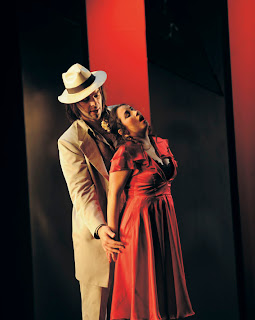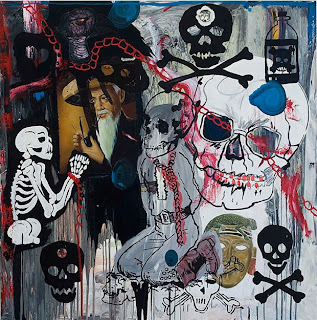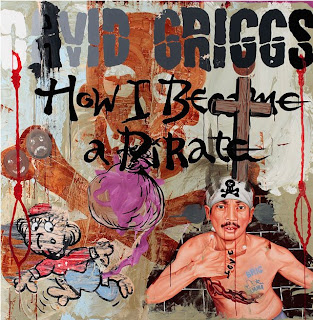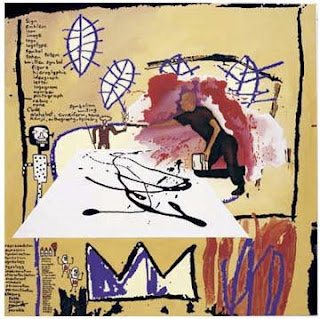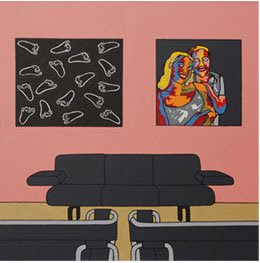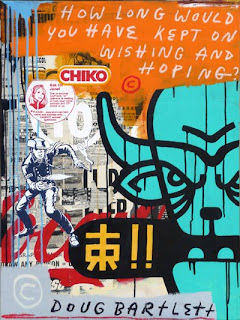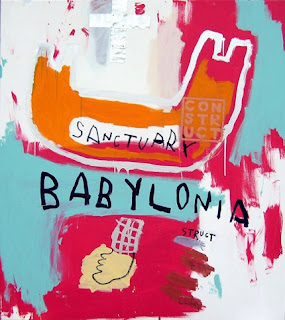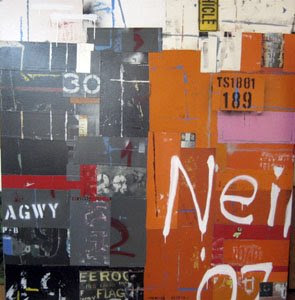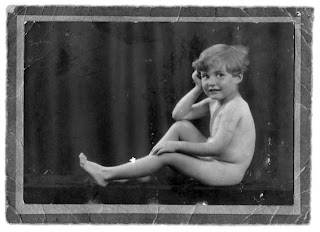 Left: Le Flâneur's father, aged 7
Photographer unknown, c1930
Left: Le Flâneur's father, aged 7
Photographer unknown, c1930
The week began with a re-run of Prime Ministerial and shock-jock outrage, at
Art Monthly Australia's decision to feature photographer Polixei Papapetrou's 2003 photograph of her daughter Olympia on its front cover (seee below). Editor Maurice O'Riordan writes that the decision "... may be seen as controversial but is made in the hope of restoring some dignity to the debate; to validate nudity and childhood as subjects for art; to surrender to the power of the imagination (in children and adults) and dialogue without crippling them through fear-mongering and repression."
LF urges anyone remotely interested to read this issue, which contains some thoughtful insights from a number of writers, including an excellent and somewhat critical essay on Bill Henson by artist and SCA lecturer Adam Geczy. (see http://www.artmonthly.org.au)
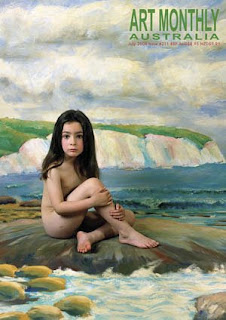
It should be said that the offending cover photograph (left) has already been widely seen and exhibited, we believe without comment or complaint, however other photographs by Papapetrou, namely
Olympia wearing her grandmothers Jewels was withdrawn, following complaint, from the Gosford leg of the ACP's touring show
Childhood and the Uncanny in 2007. Both the artist and her highly articulate daughter Olympia (now 12), have given spirited responses to the media beat-up, which seems to have somewhat subdued the howls of outrage. There's an acceptance, perhaps, that these are family matters, and that despite many assertions to the contrary, a 7 year-old need not give 'informed consent' to be photographed naked by her mother. Need she, and can she, give informed consent for the images to be exhibited, or used on the front cover on a magazine, though?
It's an interesting question, hence this special 'family' edition. All these images are G-rated, and freely and uncontroversially featured on gallery and artists websites. There is nothing in them that isn't on show on beaches, sports fields and backyards Australia-wide, yet somehow they have been caught up in the controversy surrounding the work of artists like Bill Henson (Aus) and Larry Clark (USA). There is a difference. Those two artists work with models or documentary subjects, and often deliberately investigate aspects of sexuality and transgressive behaviour, which is a different and wider debate, albeit related.
Papapetrou is a good example, because on one level she is just another mother photographing her own child, something that is done every day in most families - digital documentation of first steps, beach holidays and sprinkler fun in the suburbs, shared on Facebook, or lovingly emailed to distant aunts and grandparents. Nudity in this context is almost synonymous with childhood, and it would not occur to anyone that such images require 'informed consent', or might be of sexual interest, surely?
Surely? .... er.... not?
According to the more ferocious thought police, all images of child nudity are criminal
per se, irrespective of context, and it would be unwise to be caught with such images on your computer. Under that extreme definition LF is a criminal, not just for having a nude picture of his 7-year-old father (now passed on), but for publishing it online. We'll take that risk, however, for the sake of the debate, because an important issue is at stake.
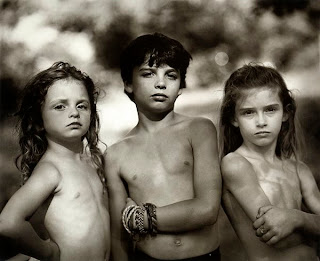 Left: © Sally Mann: 'Emmet, Jessie, Virginia 1989' from 'Immediate Family' series. Courtesy the artist.
Left: © Sally Mann: 'Emmet, Jessie, Virginia 1989' from 'Immediate Family' series. Courtesy the artist.
The obvious difference between family snaps and Papapetrou's work is that she exhibits her images as 'gallery art', and they are viewable on the web in that context. She is in fact part of a widespread 'tradition' of photographer/artists/mothers using their own children and their (children's) friends as subjects, for instance Sally Mann (USA), Jillian Edelstein (UK), Ella Dreyfus (Aus), Cherry Hood (Aus), and Petrina Hicks (Aus) to name but a few. So what could be more natural and wholesome? None are remotely 'sexualised' in intent or effect, yet all have attracted some degree of comment or controversy around this very perception.
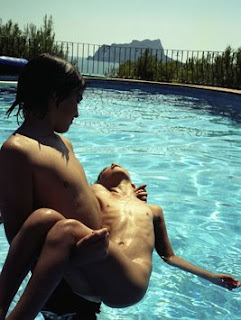 Left: © Jillian Edelstein: 'Gabriel and Savannah'. Courtesy the artist.
Left: © Jillian Edelstein: 'Gabriel and Savannah'. Courtesy the artist.
Like Mann, Edelstein documents her children's lives, in both posed and spontaneous moments, and in speaking of her iconic image (left), has defended the "naturalness of an artist/mother photographing her children and not being castigated for doing so. The image says so much: his protection of her as older brother... and the pose, like a Pièta... yet it was a totally natural moment of play in the pool."
In the case of Dreyfus the controversy is perplexing, as her portraits are usually waist-up. In Hood's case even more so, since her medium is watercolour and usually head and shoulders, yet the bleedy lips and complex gaze of her teen boy subjects make some people uncomfortable. What the hell is going on?
Catherine Keenan wrote in the
Sydney Morning Herald about Ella Dreyfus's' 2005 exhibition, depicting her son and his under 12 football team: "Ella Dreyfus is used to causing a stir with her photographs. So her latest exhibition,
Under Twelves, seems surprising at first - for its tameness... Photographed from the chest up, they are sweetly beautiful, full of a softness and vulnerability that is all the more precious for the sense that it will soon be swept away by puberty. And therein, perhaps, lies the rub. We are not used to admiring the beauty of young boys."
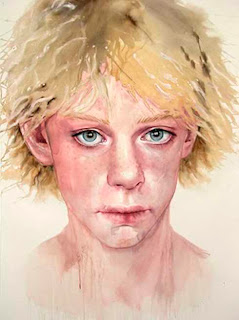
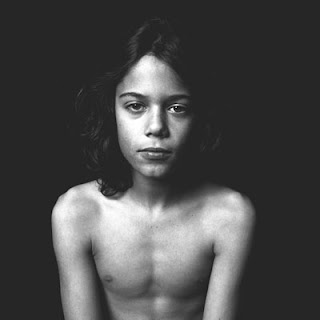 Far left: © Cherry Hood: 'Oliver' 2003, Watercolor on paper, courtesy the artist. Illustration in Harold's End by J. T. Leroy.
Left: © Ella Dreyfus, from 'Under Twelves' series 2005. Courtesy the artist.
Far left: © Cherry Hood: 'Oliver' 2003, Watercolor on paper, courtesy the artist. Illustration in Harold's End by J. T. Leroy.
Left: © Ella Dreyfus, from 'Under Twelves' series 2005. Courtesy the artist.
It was not always thus.
In American John Singer Sargent's day it was something innocent to be celebrated, and a welcome relief from the society portraits by which he made his living. Boys were a subject free of the sexual overtones that might have attended the depiction of unclothed girls, which in the 1800s still required an allegorical or mythical setting (a Grecian vase would do it) to add artistic respectability. In those days it was normal for males to swim nude, and Sargent's spontaneous studies of men and boys bathing evoke a time of innocence, the naturalness of the human animal at play in the sun, and are among his most critically admired works. The study left hangs in the Tate gallery in London.
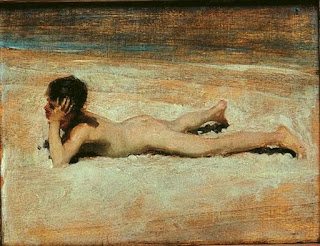 Left: John Singer Sargent: 'A Nude Boy on a Beach', 1878, Oil on wood. Courtesy Tate Gallery, London.
Left: John Singer Sargent: 'A Nude Boy on a Beach', 1878, Oil on wood. Courtesy Tate Gallery, London.
It appears that as a society we are now imposing a new set of meanings on these images, meanings that weren't there until recently, rather than responding to any innate qualities in the images themselves. Does this mean that the simple depiction of childhood/adolescence is now taboo? Has the existence of pedophiles and internet predators affected our ability to look at images of innocence... with innocence? Has the much-noted 'sexualisation' of kids and tweens in advertising media corrupted our ability to look at photographs objectively? What is this media 'sexualistion' anyway? Can it remotely be equated with the hard-core porn out there? Why has any image of a child in art, clothed or not, suddenly become disturbing to our society?
And... where do we go from here?
Do we allow the existence of both pedophiles and those who see 'sexualisation' in ALL depictions of children, to create an atmosphere where the innocence, the complexity and the beauty of children can no longer be celebrated? One could argue that, as with terrorism, is we start to self-censor and curtail our freedoms for fear of a few disturbed people, we all lose.
To quote our PM: "Just let kids be kids".
As ever... you are the jury.
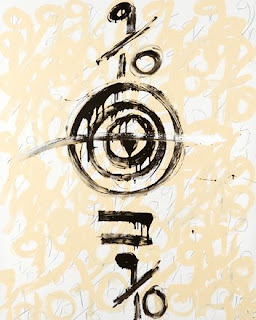
 Clinton Nain
Clinton Nain